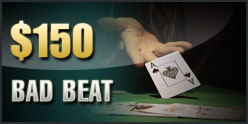Johan Huizinga once said that “play is older than culture”, and he was right.
In The Bible’s book of Jonah, they mention ‘casting lots’ repeatedly; in Sebastian Brant’s 1494 Ship of Fools, gamblers make up a good number of the eponymous vessel’s passengers; in the early 19th century, the game of poker is created by an anonymous American.
Gambling existed long before the beginning of civilisation – but since then, the way people gamble has changed less than you’d think.
State of play
Technology has evolved rapidly in the last few decades, to the point that it’s barely worth going over its greatest hits again. We’ve gone from dial-up internet to superfast, fibre-optic broadband; from mobile that need to be carted around in a briefcase to smartphones that can do anything; from Pong to Metal Gear Solid V. You know all this already; let’s not belabour it any more than we already have.
In spite of all this change, the gambling industry has remained largely the same. Certainly, the platforms have changed: consumers now have the choice of gambling from their computer chairs, or by using a mobile device. But the content – the actual substance of the games – is functionally identical.
Texas Hold ‘Em: Online. Blackjack: Online. National Lottery: Online.
The market’s approach to the digital age can be summed up in the preceding sentences: take an existing game, create a browser-based port, suffix it with online – et voila! This is made worse by the fact that it seems to be working.
Internet poker makes a lot of money; internet lottery makes a lot of money; and if they put Rock Paper Scissors or Five Finger Fillet on the internet (and no doubt somebody already has) it would likely make a lot of money. There’s no incentive for gambling companies to avoid stagnation, because even in a ‘stagnant’ state they amass sizable profits.
The future of gambling
They are lulling themselves into a false sense of security. They have perceived that their target demographic – essentially, anything older than ‘millennials’ – is more or less resigned to playing their games because they have always played their games. This is a dangerous attitude: players of a more advanced age use technology as much (and as competently) as anyone. They marathon Candy Crush, they (frustratingly, if you’re on Facebook) send out Farmville invitations; they are, in short, as likely to defect to more exciting entertainment options as millennials.
Gambling companies are not currently comfortable because gambling players enjoy their product; they’re comfortable because gambling enthusiasts perceive that they have no other option. Given a viable alternative, they’re liable to suffer for this complacency – and unfortunately for them, a viable alternative is on the horizon.
In the last few years, players have been able to enjoy AAA-quality software on their smartphones; ‘gamebling’ startups, which combine elements from casual gaming with the visceral thrill of betting, are poised to bring the same experience to the gambling industry. And the way they’re doing it is deceptively simple.
‘Gameblification’
1. Immersion
Traditional gambling always has the same story: some people sit around a table; nearly all of them lose – the end. Blackjack, lottery, Texas Hold ‘Em; whatever it is, you’re playing as yourself, and it’s hard to divorce your enjoyment of the game from your losses (or worse, to pile more of your money in in the often doomed hope of recovering them).
With gamebling products, there’s a layer of separation that mitigates both of these problems – and helpfully, immerses players in a different world. You’re not yourself, you’re a pirate captain hunting for elusive treasure; an archaeologist searching for ancient relics; a samurai warrior trying to win the approval of his master.
Customisation options such as personalised avatars also help; the user can create an idealised version of themselves to journey around this virtual world. By adding narrative and purpose – and removing uncomfortable layers of reality – players treat it far more like a traditional entertainment than gambling.
2. Presentation
Presentation isn’t everything – but it is important. Again, the gambling industry gets kind of lazy about this, because a game of Texas Hold’Em will always look like a game of Texas Hold’Em. There are cards, and a table, and that’s about it: it’s why the game endures, but it’s also what limits it in the online realm.
Gamebling removes this issue by opening up a full range of aesthetic options. Want something cartoony and fun? No problem. Want your game to look sober, classy, and professional? Also an option. And when a game has its own look and interface, it has to evolve and polish in order to survive – encouraging them to constantly optimise their overall user experience.
3. Fun
For want of a more delicate way to put it: traditional games on the internet are deeply, deeply boring. The things that make card games exciting aren’t things that translate online: it’s the weekly poker game at your friend’s house; sitting around waiting for the lottery numbers with your family; the weight and feel of a pair of dice.
Flattening these things and removing the physicality simply isn’t as interesting. To survive, gambling companies need to forge ahead in a different direction – as gamebling companies are doing right now. They’re using leaderboards; they’re introducing skill-based elements; they’re competing directly against friends and family. They feel like they’re doing something instead of, effectively, using their money for kindling.
In the end, this is why the influence of casual gaming on the overall market is likely to become overwhelming in the next few years. All the gambling industry currently has to offer players is many thousands of slight variations on existing games and experiences. It’s already having an experience on engagement, and it’s likely to become more pronounced in the coming years.




















